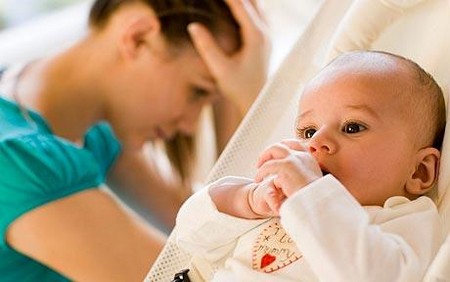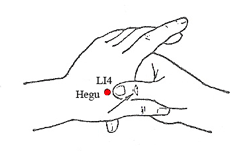 The experience of pregnancy is unique for every woman, which is overwhelming for every mother and serves as a landmark in life. Giving birth to a baby marks the beginning of your motherhood life. Parenthood starts the moment your baby comes into the world and so does the ‘post-partum’ period. This period is marked by many adjustments or changes you have to make in dealing with the baby but also the changes your body has gone through during a long 9 month of pregnancy.
The experience of pregnancy is unique for every woman, which is overwhelming for every mother and serves as a landmark in life. Giving birth to a baby marks the beginning of your motherhood life. Parenthood starts the moment your baby comes into the world and so does the ‘post-partum’ period. This period is marked by many adjustments or changes you have to make in dealing with the baby but also the changes your body has gone through during a long 9 month of pregnancy.
What Are Common Postpartum Complications?
1. Perineal Pain
Perineum is the region between vagina and rectum that experiences the most stretching and bruising during delivery. If a episiotomy was done, then the cut may even hurt more, especially in sitting positions.
How to treat this problem: Consult your doctor first, if he thinks the bruising and pain is normal and will subside soon you can stop worrying. However, pain while sitting can still be a problem. To help you sit in a comfortable position, use a donut cushion and always sit on a soft cushion. Besides, search for some strengthening exercises to help you deal with the pain.
2. Hemorrhoids and Constipation
As pregnancy proceeding, more pressure is exerted onto the uterus and organs in lower extremities. This often leads to constipation, in some severe cases, hemorrhoids, which is the discharge of blood along with painful defecation, both of which are common postpartum complications. The condition is likely to persist even after childbirth, yet in most cases it resolves spontaneously within a few weeks.
How to treat this problem: This condition can be treated easily with OTC (over the counter medicines). Natural treatment can also be used but self-medication should be avoided. Because mothers with C-sections or stitches in their abdominal region may have tears or internal bleeding, in these cases, laxatives or suppositories should be used to ease pain and constipation.
3. Mastitis
As one of the common postpartum complications, mastitis is a condition of breasts infection that may occur when bacteria gains entry into the breasts via abraded skin, the baby’s mouth, or unhygienic conditions such as dirty clothing, etc. The bacteria can either creep through breast skin, milk or nipple opening. Most cases of mastitis reveal that the infection is non-contagious. So you can continue to breastfeed your baby.
How to deal with this problem: Common signs and symptoms include swollen breasts which usually feel painful upon touching. Fever is also expected along with redness. Treatment includes a simple course of antibiotics to cure the infection along with drugs to reduce fever.
The following video explains ways to treat mastitis naturally:
4. Uterus Infection
Uterus infections can occur if fragments of placenta remain in the uterus instead of separating out as it normally should.
How deal with this problem: Uterine infections is indicated by flu like symptoms, mild fever, increased heart rate, increased number of white blood cells in serum, uterus swelling, tender lower abdomen, etc. If this infection spreads to surrounding walls, it can lead to severe lower abdominal pain, foul smelling uterine discharge and high grade fever. Antibiotics can be used to treat infections, which, if not started promptly, can lead to toxic-shock syndrome.
5. Postpartum Depression
After giving birth to a child, mothers are likely to feel overwhelmed with the new responsibilities that constantly surround them, which could lead to postpartum depression with constant feeling of anxiety and anger continuing over the next few months of birth, thus making it one of the most common postpartum complications. This is common in women who are experiencing motherhood for the first time. Also single women who are conscious about their body figure, career and finances in addition to upbringing of a baby are also exposed to the risk of postpartum psychosis, which tends to occur if depression continues for more than a year after giving birth.
How to deal with it: The first important thing is to realize that you are having issues dealing with motherhood. To heal from this condition, family is the best support you can have. Also, counseling and joining support groups are helpful. Medication can be needed if situation worsens over time.
Here is a video shares more tips on dealing with PPD:
6. Other Common Postpartum Complications
|
Complications & Problems |
Description |
|
|
Postpartum infections |
C-section incision infections |
In such an infection, redness and swelling is evident that may be coupled with itching and pus like discharge. |
|
Kidney infections |
This infection may result from uterus or urine infection during pregnancy. Women may want to urinate more frequently. Lower abdomen pain, fever and constipation are usually experienced. Antibiotics can be prescribed before the infection spreads systemically. |
|
|
Breast problems |
Swollen breasts |
This is experienced because breasts are filled with milk, the pressure increases in breastsif the baby is not fed regularly. Taking cold showers and wearing fitted bras can help with easing the discomfort. |
|
Clogged ducts |
This is a result of small clogs present in ducts through which milk is passed out, it is accompanied with pain, redness and swelling. No fever is experienced though. Using warm packs helps relieve the clogs. |
|
|
Vaginal discharge |
Vaginal discharge is common after delivery, lasting up to two weeks. This discharge consists of blood and pieces of uterus. The discharge is bright in color at first then gradually lightens over time. Heavy exercise and other similar physical exertions are likely to increase the discharge, but this should subside in approximately two weeks. |
|
|
Hair loss |
Hair loss is experienced after giving birth, because the subsiding hormonal balance can’t maintain your hair. But the loss reduces over a few months of childbirth and don’t need to worry. |
|
|
Stretch marks |
When pressure is applied to your abdomen constantly for months, your skin tends to adapt by stretching. However, you are left with unwanted stretched skin after delivery, which gets back to normal in a year or so. Not scratching the skin helps with regaining your previous shape. |
|
|
Incontinence |
Because the lower body has been under pressure in the last few months of your pregnancy, you may experience incontinence of urine and feces. It continues after giving birth and may require lifestyle and dietary modifications. Wearing sanitary napkins and consulting your doctor for medication can help. |
|
|
Discomfort during sex |
The vagina is bruised and swollen after giving birth. It is natural to have immense discomforts while having sex. In some conditions, bleeding and increased discharge would occur. In some women, reduced libido and dryness can further aggravate pain and swelling. |
|
|
Postpartum hemorrhage |
It is a condition where a mother is likely to die because of excessive bleeding through vagina, but few moms confront this complicaiton. In the third stage of pregnancy, uterotonic is administered to a woman for a shorter labor, reducing the chances of hemorrhage. Another drug used for management is oxytocin, which helps reduce chances of hemorrhage by 40 percent. |
|
When Should You Consult a Doctor?
- Women must consult their doctors if they feel intensely depressed and are having negative thoughts such as committing suicide.
- You should refer to a doctor if your vaginal bleeding is unusually colored and discharge has not subsided, even after two weeks of giving birth.
- Doctors should also be consulted in cases of high and persistent fever with cough and pain in the lower abdomen.
- If your breasts feel painful on touch and look red and swollen, you might want to consult your doctor to rule out any infections and risks for your baby.
As far as depression goes, you should look at the positive changes and focus on the upbringing of yoiur child. Also maintaining good hygiene and regular exercise is beneficial not only for you but also for the baby. Enjoy the experience of motherhood and keep a healthy mind and physic to make the affair joyful and blissful for you and your family.






